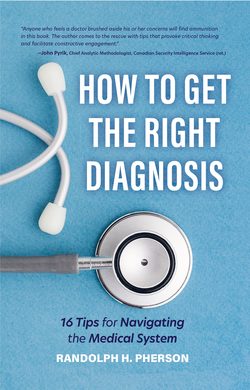Читать книгу How to Get the Right Diagnosis - Randolph H. Pherson - Страница 11
На сайте Литреса книга снята с продажи.
ОглавлениеFigure 1. Calculating Two Standard Deviations on a Standard Bell Curve
The thesis of my book is that far more people in this second group would have lived if they had adopted the advice contained in the chapters that follow. I offer this thesis as a hypothesis to be tested and validated or disproved by those much more proficient in medical research.
Disclaimers
My goal in writing this book is to provide a positive—and useful—narrative that will help save people’s lives. The intent is to be analytic and not accusatory. I simply want to offer helpful advice. For that reason, I do not refer to any doctors by name, nor do I identify any specific hospitals, medical practices, or facilities.
This is a personal story. Conclusions are presented as testable hypotheses, not proven facts. The author would greatly appreciate any effort by those in academia or the medical profession to document the author’s findings and, specifically, to offer additional evidence that would validate—or invalidate—his assumptions regarding patient diagnosis.
The book does not constitute an official release of Central Intelligence Agency (CIA) information. All statements of fact, opinion, or analysis expressed are those of the author and do not reflect the official positions or views of the CIA or any other US government agency. Nothing in the contents should be construed as asserting or implying US government authentication of information or CIA endorsement of the author’s views. This material has been reviewed solely for classification.
Acknowledgments
This book has benefited from the contributions of many who have agreed to share their experiences in trying—both successfully and unsuccessfully—to navigate the challenges and peculiarities of the American medical system, including Maryam Allahyar, Kirsti Garlock, Polly Jones, Pamela Noe, Mary O’Sullivan, Kathy Pherson, Kirk Rutherford, Diane Sievers, and Lynda Warren. They would prefer to share their stories anonymously for inclusion in the book, and I have honored that wish, assigning fictitious names to each anecdote. Many also offered valuable advice on how to better focus my story. In addition, I would like to thank Dr. Douglas Boyink, Leanne Cotten, Dr. Mary Edwardson, Cherie Lawson-Shanks, Kristine Leach, Richard Pherson, Danielle Rickard, Dr. Mitchell Ross, and Marie Strassburger for helping me conceptualize the storyline and for providing comments on versions of the manuscript.
